The forests of Madagascar are truly magnificent. Although Madagascar has become most famous for its lemurs, especially the ring tailed lemurs, Malagasy forests host a large variety of beautiful creatures, and the forest itself is an experience well worth the trip.
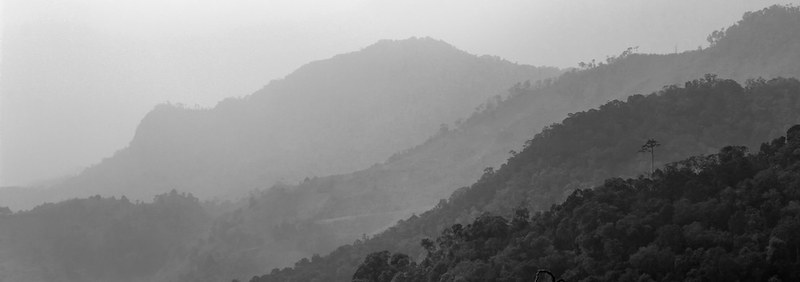

Primary forest is as close as you can get to another world. The canopy breaks up the light, and what little does get through is tinted green and yellow by the leaves it passes through. The backlit trees seem to be glowing at dusk. Gaps in the canopy leave little openings where reptiles sun themselves. Birds, lemurs, and bugs chirp together in the background. But it’s hard to appreciate the forest here while you’re moving about and making noise. While hiking, it’s about the destination, your rising heartbeat, and the constant shallow breathing. The way to appreciate the forest is to just sit. Sitting for a few minutes, it’s amazing how much movement you notice. With no disturbance, and the peace of forest noise, all the creatures come out to play. You might see little tenrecs running about on the forest floor, or a chameleon meandering down his branch. You might see a mongoose, or a spider, or a snake, or any number of creatures that live in this gorgeous habitat. Through the trees you might get a glimpse of a group of lemurs. Watch long enough and you might learn about their habits, or just appreciate how their small hands reach for their favorite fruits.
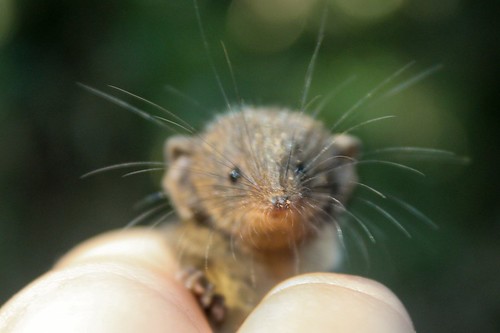
Tenrec
I’m currently staying at a research station called ValBio, right outside a relatively new national park: Ranomafana National Park. This is the center of many conservation and research efforts, since it has such high biodiversity, beautiful forest, and all runs under the wing of a very experienced and dedicated scientist Patricia Wright. She originally created the park to protect a species of lemur that was thought to be extinct, but now the park does more than that. The park helps keep this remaining part of forest intact, a big contribution now that Madagascar has only 11% forest cover, due to the slash and burn agriculture that is gradually eating away at the forests. Ranomafana National Park keeps many other types of animals habitats alive, and through extensive outreach and education programs helps villagers learn how to live with the forest, rather than cutting down the forest for fires and fields.

Ranomafana National Park hosts a generous variety of lemurs: 12 species total. The Propithecus have long limbs, are black with white tufts and have curious orange eyes. Mouse Lemurs are smaller than your fist, with giant eyes and long prehensile (capable of grasping) tails. Red bellied lemurs are the stereotypical lemur; they’re small, only about 10 inches (not including tail) with stubby black snouts and almost human hands. They’re wild animals, but when stumbled upon they’ll mostly ignore you, going about their everyday life. They’re very communal creatures, and they eat all their meals of fruit, nectar, mushrooms, and sometimes millipedes together. A group of lemurs munching on a fruit tree is quite the sight to walk in on.
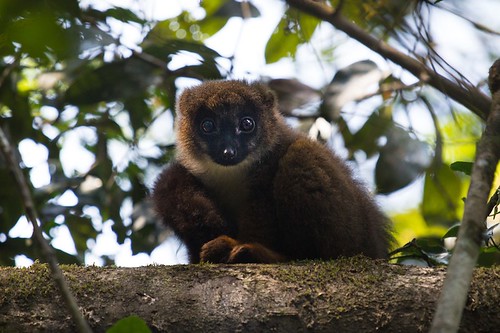
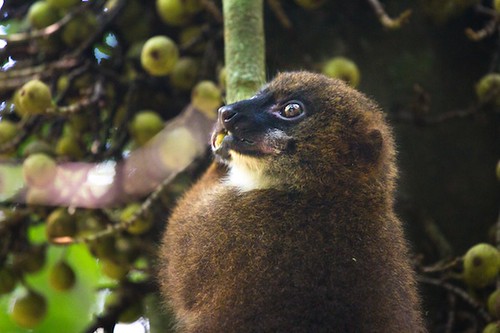
This is the part of the experience that everyone talks about, but the forest does have a “dark” side. There are spiny trees that always seem to be in the best place to grab when you’re falling. There’s a lot of tripping over roots in the path. Leeches in trees can fall straight into awaiting eyes and mouths. Dirt gets in your fingernails, and that pair of socks might smell like mildew forever. That’s what all travelers subject themselves to when visiting the tropics, especially Madagascar. But is it worth it when you find the baby lizard barely the size of a quarter? Is it worth it when you find a feasting family of red bellied lemurs? Does learning about the highly sensitive (and giant) whiskers of nocturnal tenrecs lighten that load? Maybe finding a rare type of weevil helps ease the pain of the bumps and bruises. I think it’s worth it, but sadly the forests are disappearing. It’s becoming increasingly important to protect these beloved rain forests, and all the beauty and biodiversity they protect.
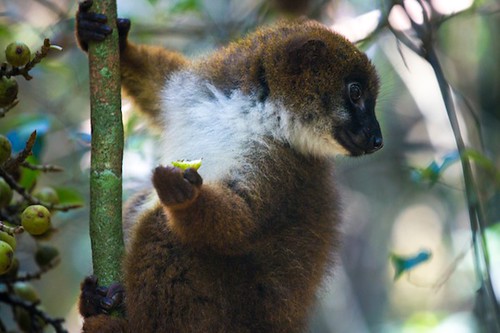
Anne Driscoll is a member of the Youth Travel Blogging Mentorship Program
All photos courtesy and copyright Anne Driscoll
Madagascar: More than Lemurs
